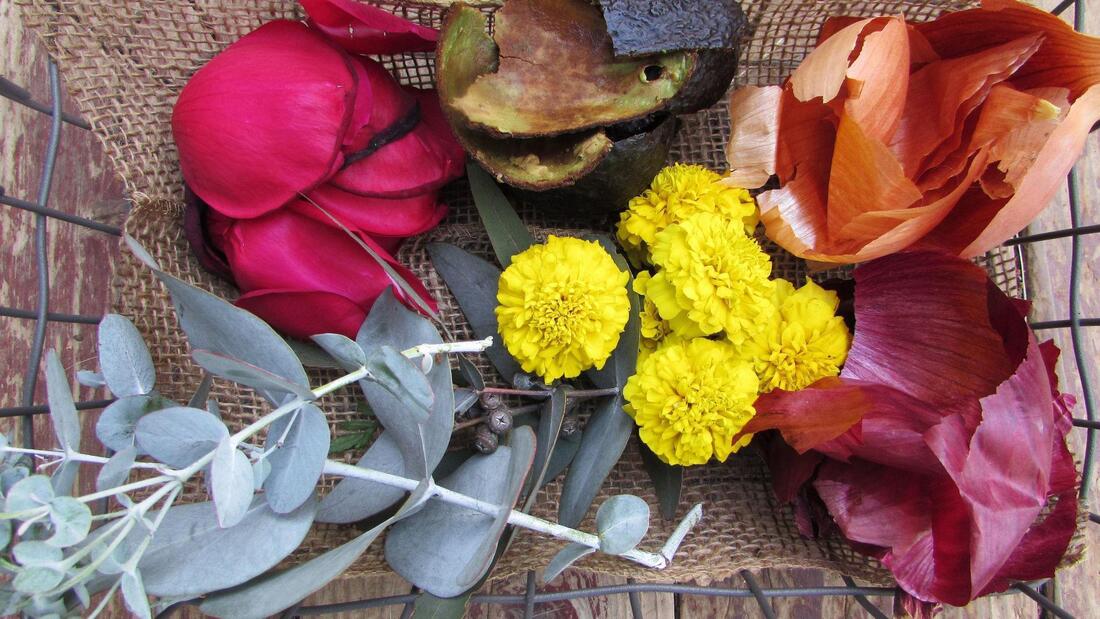|
Have you noticed the comeback of tie-dye? We shouldn’t be surprised. As far back as the Bible, we learned that Joseph had a coat of many colors. Humans have a history of extracting organic dyes from leaves, bark, berries or flowers, insects and sea snails, and more. These colors were added to fiber, which was then woven into cloth. At issue was how to protect the color from fading. In 1856, an 18-year-old chemist discovered a synthetic aniline purple dye while seeking to develop synthetic anti-malarial quinine. It resulted in a fashion to fade. In the early 20th century, sun-resistant dyes were created. The downside is that synthetic polymers contribute to global water pollution. The harmful chemicals are ingested by fish and wildlife and ultimately affect humans. Today, we know that natural organic dyes are safer and kinder to the environment and all living creatures. You can find a source of organic dyes in your own garden. For example, marigolds, calendula, black-eyed-susans, sunflowers and onion skins can yield yellow and orange dyes. Elderberries, blackberries and purple basil give us pinks and lavenders. Black beans can be soaked in water overnight for their juice/dye. Japanese indigo and hollyhock yield shades of blue. You might use red cabbage for purples. There are many choices. It is important to note that natural fabrics like cotton, wool, linen and muslin will hold your dye. Synthetic fabrics will most likely fade. Before you begin, you might gather gloves, old clothes, safety goggles, a dust mask, an apron and closed-toe shoes. Don’t be scared off. This is recommended in anticipation of splashing. Here are the basics: You can prepare your fabric with a mordant to help the dye to adhere. Alum is an example, and you will find it in the spice aisle of the grocery store. Place one or two teaspoons into a large stainless-steel pot of water and add your fabric. Bring to a boil and then simmer for an hour. Rinse in warm water. Meanwhile, to prepare the dye bath, add the color plant source to a large stainless-steel pot of water and bring to a boil. Simmer for an hour or longer, depending on the depth of color you prefer. Strain the pot and submerge the fabric into the dye bath to simmer, allowing room for movement, for at least an hour. Allow the fabric to cool and then rinse and dry. Avoid direct exposure to the sun. You should know that colors may vary based upon many factors, but do persevere and you will find your favorites. Imagine knitting with wools of blended nontoxic color or gifting linen napkins or cotton clothing you have created with your own organic dyes from your own garden. How rewarding is that! Natural organic dyes are safer and kinder to the environment and all living creaturesSource: Mercury News
Comments are closed.
|
Archives
January 2023
Categories
All
|

 RSS Feed
RSS Feed
